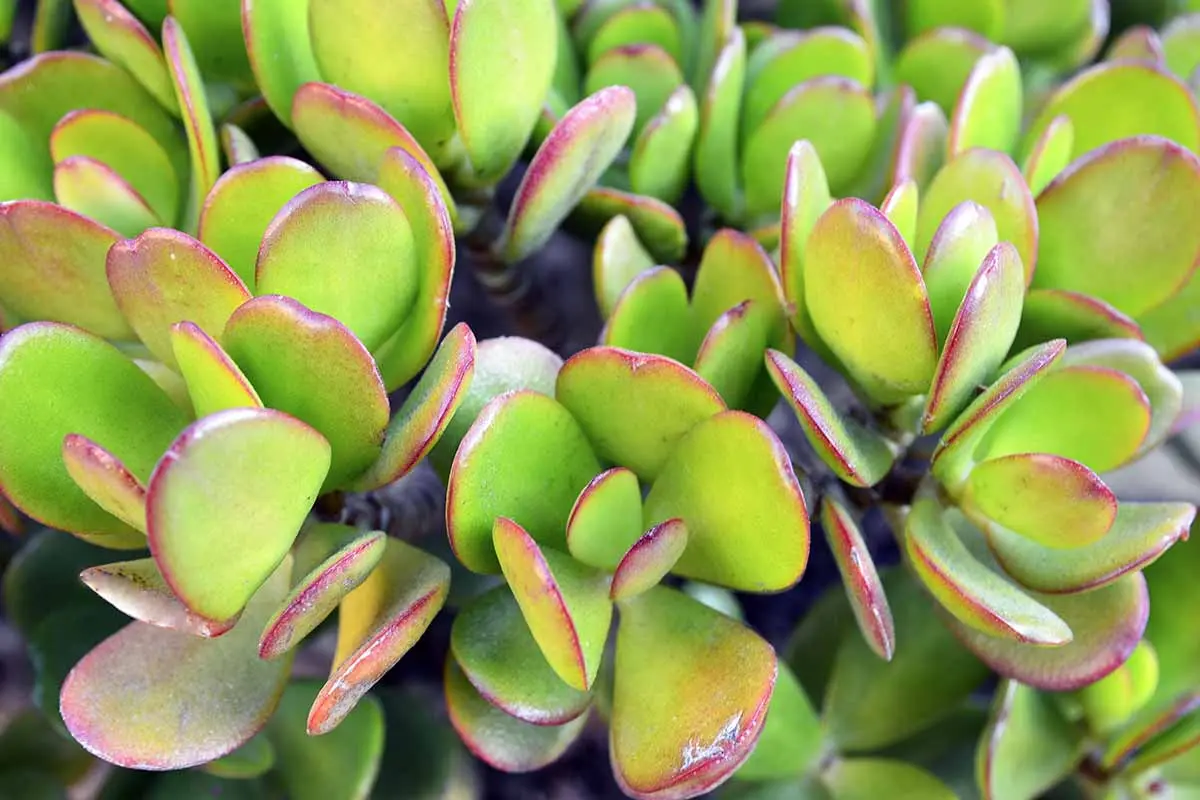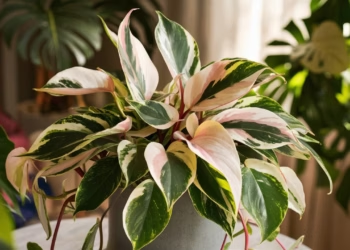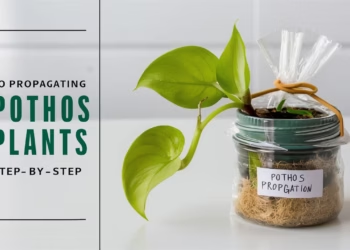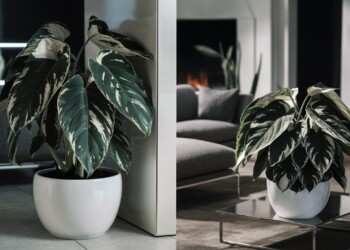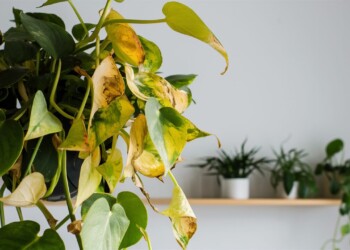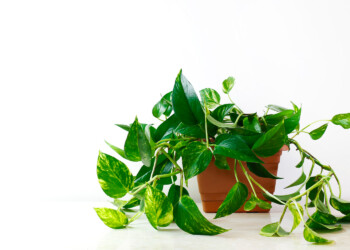Welcome, green thumbs and plant enthusiasts, to a leafy conundrum that has left many scratching their heads – why in the world are your jade leaves turning yellow? It’s like your beloved succulent is trying to send you a Morse code distress signal, and you’re left decoding it like a perplexing puzzle!
But fret not, fellow plant parents, for we are diving deep into the verdant world of jade plants to unearth the reasons behind their yellowing leaves and, more importantly, how you can nurse your leafy friend back to its radiant, green glory!
So, buckle up, as we embark on this horticultural adventure to Figure Out Why Your Jade plant Leaves Turning Yellow and How To Fix It!
Table Of Contents
Common Culprits: Decoding the Mystery
Water Woes! Is your jade thirsty or drowning?
Ah, the classic plant predicament – too much or too little water. Your jade might be parched, gasping for hydration, or worse, Your Jade, originating from arid landscapes, is not a fan of excessive moisture. Overwatering, akin to drowning, leads to root rot, resulting in those distressing yellow leaves. It’s crucial to strike a balance – not too much, not too little. Here’s how you can determine which water woe is afflicting your succulent:
- Overwatering Signs:
- Yellow leaves with a soft, mushy texture
- Soil that’s consistently wet
- Foul odor emanating from the soil
- Underwatering Signs:
- Yellow leaves that feel dry and crisp
- Soil that’s bone-dry and pulling away from the pot’s edges
- Wilting despite regular watering
Quick Tip: Stick your finger into the soil – if it’s dry up to your first knuckle, it’s time to water. If it’s moist, give it some time to dry out.

Sunburn or Shade Sorrow?
Jade plants, in their native South African habitat, bask in the sun like they’re on a tropical vacation. However, their sun-soaking limits can be tested when they find themselves in our living rooms. Excessive sunlight can lead to sunburn, while insufficient light can result in sad, yellow leaves. But how do you strike the perfect balance?
- Sunburn Symptoms:
- Leaves with brown or red edges
- Wrinkled, leather-like texture
- Sun-facing leaves showing more discoloration
- Shade Sorrow Symptoms:
- Leggy growth with widely spaced leaves
- Pale green or yellowish hue
- Stunted growth
Quick Tip: Rotate your jade plant regularly to ensure all sides get their fair share of sunlight. If it’s sunburned, move it to a shadier spot gradually.

Nutrient Deficiencies: The Silent Saboteurs
While not a diva, your Jade still craves nutrients. Nitrogen shortages, a common cause of yellowing, manifest on lower leaves. Potassium deficiencies edge leaves with yellow, while iron and magnesium bring their distinct patterns. But beware, moderation in fertilization is key – a nutrient overdose is more perilous than deficiency.
Soil Shenanigans: Is it time for a repotting rendezvous?
Imagine living in the same cramped apartment for years – wouldn’t you long for a change of scenery? Your jade feels the same! If it’s been in the same pot for eons, it might be shouting, “Hey, I need some space!” Here’s how you can tell if it’s time for a plant real estate upgrade:
- Signs of Soil Shenanigans:
- Slower growth
- Waterlogged soil despite proper watering
- Roots peeking out of the drainage holes
Quick Tip: Repot your jade every 2-3 years, especially if it’s showing signs of outgrowing its current pot.

Jade Plant Car: Nursing Your Jade Back to Green
Water Wisely: Finding the Sweet Spot
- Adjust your watering frequency based on the season. Jades need less water in winter.
- Use well-draining soil to prevent waterlogged roots.
- Yellow as a school bus is not the color your Jade signed up for. If the soil’s soggy, let it dry before watering. Test moisture with a chopstick or finger – clean means it’s time. Water thoroughly, but no wet feet.
Correcting Nutrient Deficiencies
Yellow screams nutrient deficiency. A balanced, water-soluble fertilizer is your ally. But beware of overfeeding – stick to directions. Targeted treatments for specific deficiencies, like blood meal for nitrogen, can be game-changers.

Sunlight Savvy: Balancing Act
- Provide bright, indirect sunlight for optimum jade happiness.
- Rotate your plant regularly to ensure even sun exposure.
- Gradually acclimate your jade to direct sunlight if it’s been in the shadows.
Leaching Salts
Generous with fertilizer? Your Jade might have salt buildup. Flush it out by watering deeply, like hitting reset on its root environment.

Repotting Ritual: Giving Room to Grow
- Repot every 2-3 years to refresh the soil and provide more space.
- Choose a pot with drainage holes to prevent waterlogging.
- Use a well-balanced potting mix for succulents.
Soil and Repotting
Sometimes your Jade needs a fresh start. Repot in spring with fresh, well-draining soil, like moving to a neighborhood with better amenities. Perlite or sand increases drainage, giving your plant a rebirth.

Preventing Yellow Leaves: The Path to Evergreen Brilliance
Establishing a Watering Schedule
Before even thinking about watering, check soil moisture. If it feels like a dry martini, water. If damp, step away. Your Jade isn’t a fish; it doesn’t need to swim.
Watering Techniques
Thoroughly soak when watering, ensuring excess drains away. It’s a spa day for your plant – hydration followed by relaxation in a dry pot.
Nutrient Management
A balanced, succulent-friendly fertilizer prevents nutrient deficiencies. But don’t overfeed; moderation is the key.
Addressing Specific Deficiencies
If your Jade looks peaky, consider magnesium. Epsom salts can be a quick fix, but stick to the script.
Soil Quality
Use well-draining soil to avoid waterlogging. Your Jade’s roots need to breathe, not take a bath.
Light and Location
Bright, indirect light is a sunbath for your Jade. Too much can lead to a sunburned mess.

There you have it, intrepid plant enthusiasts – the keys to deciphering why your jade plant has yellow leaves and the secret recipe to fix it! Remember, every jade is unique, so be patient, observe, and adapt your care routine accordingly. Your leafy companion is counting on you to be the hero in this green adventure.
So, go ahead, water wisely, embrace the sunlight dance, and give your jade the room it deserves. Soon, those yellow leaves will be nothing but a distant memory, and you’ll be left with a thriving, vibrant succulent that’ll make other plants green with envy!
Figure Out Why Your Jade Plant Has Yellow Leaves and How To Fix It – because every leafy detective deserves a green, happy ending!
FAQs
How do you recover an overwatered jade plant?
To recover an overwatered jade plant:
- Allow the soil to dry out completely before watering again.
- Ensure the pot has drainage holes to prevent waterlogged soil.
- Remove the plant from the wet soil, trim any rotted roots, and repot in fresh, well-draining soil.
- Adjust your watering schedule to avoid future overwatering.
- Provide proper sunlight to encourage healthy growth.
Can jade plant recover?
Yes, jade plants can recover from overwatering if the issue is addressed promptly. Adjusting the watering routine, improving soil drainage, and providing proper care can help the plant recover and regain health.
How do you fix a sick jade plant?
To fix a sick jade plant:
- Identify and address the specific issue, whether it’s overwatering, underwatering, pests, or diseases.
- Adjust the watering schedule and ensure proper drainage.
- Trim off any damaged or diseased parts using clean, sharp pruning tools.
- Provide optimal growing conditions, including proper light, temperature, and humidity.
- Consider repotting if the soil is compacted or if there are signs of root rot.
What is the best fertilizer for jade plants?
Use a balanced, water-soluble fertilizer with a formula such as 20-20-20 or a similar ratio. Fertilize jade plants sparingly during the growing season (spring and summer) and reduce or eliminate fertilization during fall and winter. Follow the instructions on the fertilizer packaging for application rates.
What does an overwatered jade look like?
Signs of an overwatered jade plant may include:
- Yellowing or wilting leaves.
- Soft and mushy stems.
- Black or dark brown roots.
- A foul smell indicating root rot.
- Leaf drop or leaf loss.
- Algae or mold growth on the soil surface.
If you observe these symptoms, it’s crucial to adjust the watering routine and address the issue promptly.
Should I remove damaged leaves from jade pla
Yes, it’s advisable to remove damaged leaves from a jade plant. Use clean and sharp pruning shears to trim away any yellowed, wilted, or damaged leaves. This not only improves the plant’s appearance but also helps redirect energy to healthier parts of the plant. Be cautious not to remove more than one-third of the plant’s foliage at once to avoid stress.
